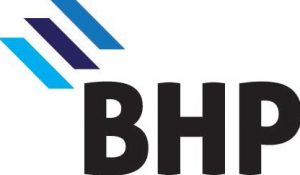Inflation is the key in Autumn Statement Giveaway

Chris Humphreys is a Tax Partner at BHP Chartered Accountants
The late Harold Wilson is credited with the iconic statement “A week is a long time in Politics”– although maybe I should say accredited, as when asked about it shortly before his death, he had no recollection of actually uttering those famous words.
Notwithstanding this, I think that it’s a pretty apt description of my reaction to the measures introduced in today’s Autumn Statement – all focused on delivering growth and skills but including significant announcements in relation to tax relief for business investment and reductions in National Insurance – despite both the Prime Minister and Chancellor being adamant that tax cuts would be virtually impossible.
Meeting the inflation target for 2023 has definitely given the Chancellor the confidence to act more positively, particularly when coupled with the latest figures from the Office for Budget Responsibility, which downgraded growth forecast but indicated that the Chancellor has £25bn more fiscal headroom than anticipated.
This confidence and headroom has given the Chancellor the opportunity to introduce 110 measures (count them!), the key changes being:
- The permanent extension of the 100% full expensing of expenditure that qualifies for capital allowances – estimated to increase total business investment by £14bn over the forecast period.
- Class 2 National Insurance contributions are to be abolished from April 2024 – that’s an initial tax saving of £180 per annum.
- Class 4 National Insurance contributions are to be reduced from 9% to 8% from April 2024 – a further tax reduction of up to £377 per annum for the self-employed.
- Employee National Insurance Contributions to reduce by 2% from 12% to 10% – this is from January 2024.
- The anticipated commitment to the Pension Triple Lock with state pension confirmed as increasing next year by 8.5%.
- A further £50m for a 2-year apprenticeship pilot, exploring new ways to stimulate training in growth sectors.
- £4.5bn to support UK manufacturing – boosting jobs across the UK, safeguarding energy security, building health resilience and preparing for a green future.
- Business rates relief – small business multiplier frozen for a further year, and 75% relief for the hospitality sector frozen for another year.
- Combination of the large business and SME schemes for research and development from April 2024.
There is a lot to digest and unpack, but in doing so, we need to be realistic and reflect that the bulk of the fiscal headroom has arisen due to the freezing of allowances and fiscal drag rather than any dramatic improvement on the part of the UK economy.
Our growth forecasts have been downgraded, inflation rates are still high, and will not reach the Bank of England target until a year later than anticipated. In turn, analysts only expect interest rates to begin to come down in late 2024 at the earliest.
Fiscal stability and avoiding inflationary pressures are still the Chancellor’s watchwords, and my feeling is with this being the case, then we can give him the benefit of the doubt as far as pre-election tax announcements go. However, that might not be the case come next March as we get closer to the General Election.
So, an Autumn Statement focused on growth and productivity fuelled by some fiscal headroom but against a backdrop of a vote winning inflation target A week in politics is certainly interesting these days.
For further insight and support on how the Autumn Statement will impact you, join our webinar this morning by clicking here or speak to a member of the team today!








